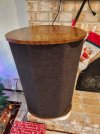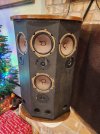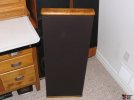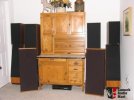- Joined
- Oct 11, 2018
- Messages
- 3,741
- Likes
- 6,457
Since no one has said it, I'll be the corpse at the party. Vintage speaker restorations are often a crap-shoot. The wrong year of driver may have been substituted, or in many cases a cheap generic driver that sort of looks like the original. Don't let me discourage you, but keep that in mind as you shop.
Replacement of parts for a 50 year old product has to be hit or miss. Even for a product as ubiquitous as the '70s L100, which sold in much greater quantities, and which company is still active today. The upside is that for speakers such as older JBLs, or vintage AR, there is a hobbyist set that can help, and you can find replacement drivers fairly easily. JBL drivers were pretty rugged, so getting decent parts from scavenged units is possible. I don't know about drivers from original AR.
Then there is intra-model variation. JBL made at least three versions of that speaker, in addition to using several versions of its individual drivers, all having the same basic number. For example, there were at least four versions of the LE-25 tweeter over the course of production. I can't speak to sonic/measurement differences among the various production units.
Also, early L100 were wired differently than later versions.
JBL's spec sheet (see below) listed suggested replacements, once individual drivers went out of production, but noted that replacements should be done in pairs, since the sound of the stereo set would be different. Of note: the company's suggestion to use the 035t metal tweeter as a 'last resort' was an understatement. Finally, the spec sheet indicated that the 035 was 'drop in', but the baffle would need to be cut in order to make it fit up against the midrange driver. Perhaps on the 4311 it would be 'drop in', but I never checked that.
I'd imagine that attempting to refurb a more limited distribution loudspeaker like the DCM would be that much more difficult.









